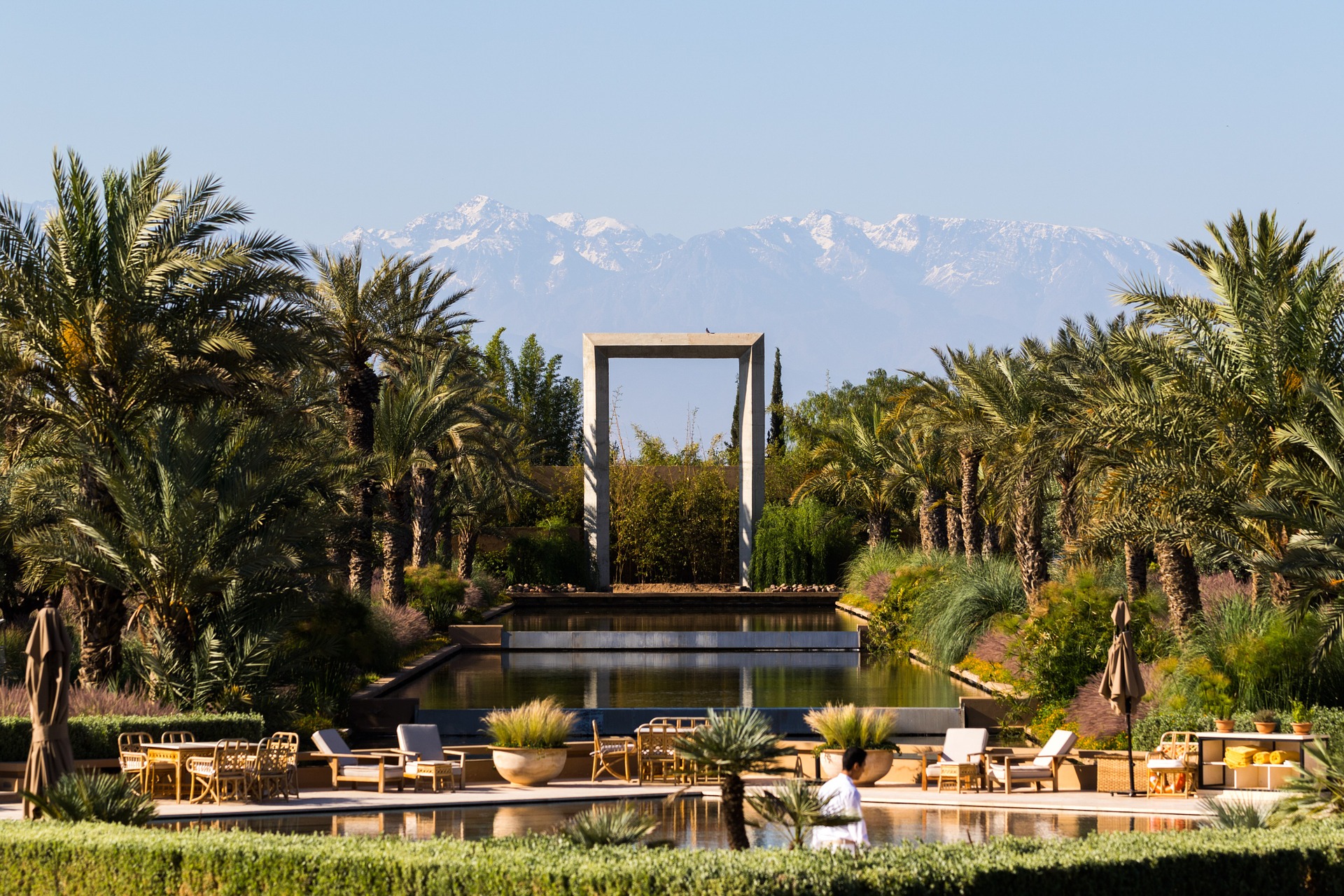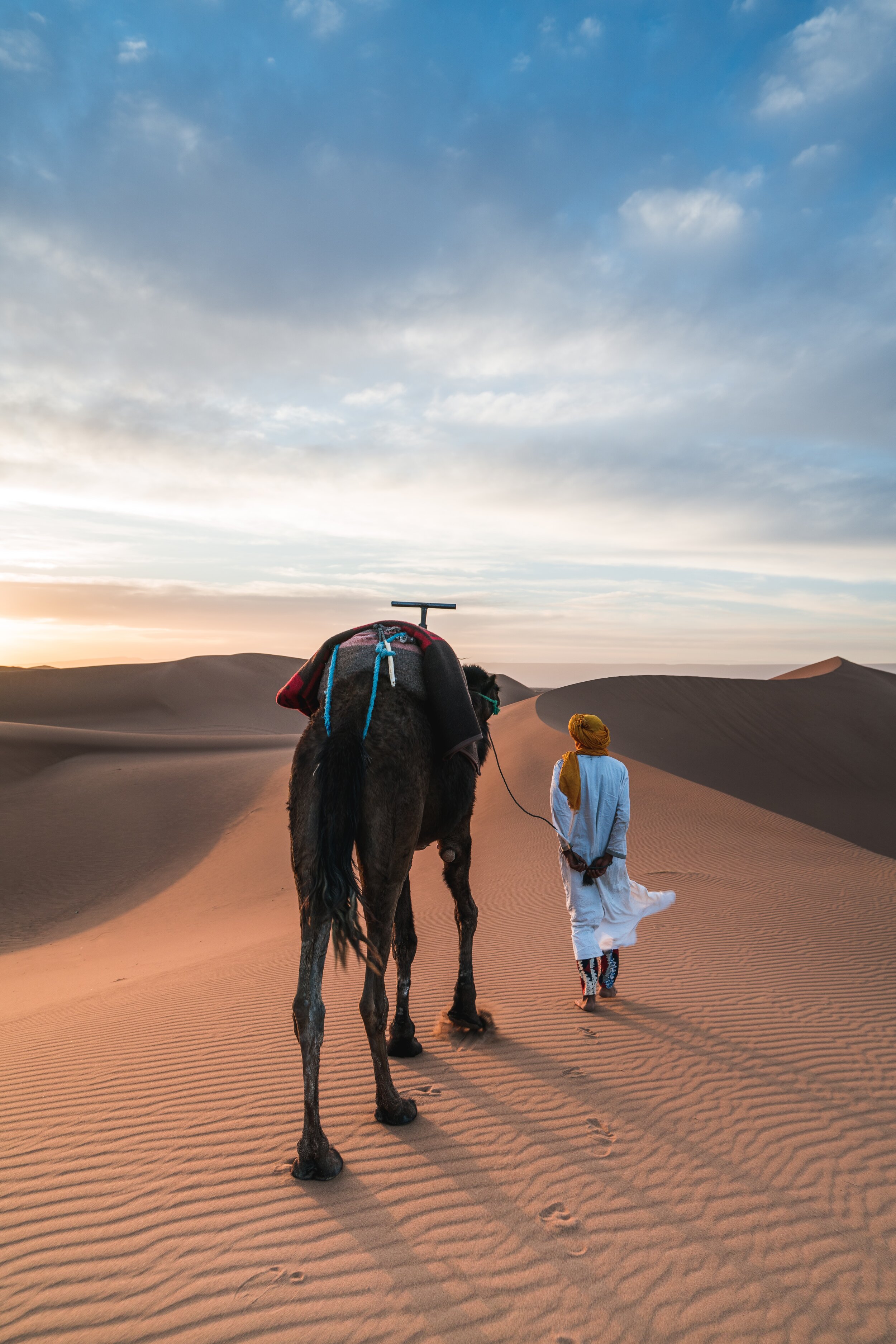From riding camels across the burnt-orange sand of the Sahara to feeling the electric energy of Marrakesh’s night markets buzz through you, Morocco provides no shortage of exhilarating adventures. This enchanting land has everything your heart could possibly desire; hike the Atlas Mountains, lounge seaside, or explore the country’s imperial cities. While visiting Morocco is a no-brainer, deciding when to visit is a little more challenging. Should you visit Morocco in August or wait to tour Morocco in January? There’s no bad time to travel to this fascinating country, but where you plan to go and what you plan to do will determine the ideal time to visit. Keep reading to find out when to embark on your Moroccan getaway!
Summer (June-August)
Morocco is at its busiest during the summer months, particularly the peak months of July and August. June sees temperatures rising and tourists starting to flock to the coast, but temperatures and travelers both increase as the summer progresses. If you’re planning a trip to coastal towns such as Rabat, Essaouira, or Tangier, now is the time to go—as long as you don’t mind the crowds. With temperatures in the 80s, the coastline is cool compared to the scorching temperatures of Morocco’s inland, and the water is at its warmest. Try your hand at thrilling water sports and dine on fresh seafood. The only con of visiting the coast of Morocco in June or July is how busy it gets. You definitely need to plan far in advance to ensure accommodations.
Another good option for this time of year is the Atlas Mountains. They’re cooler than the country’s inland, but they can still get pretty hot, especially in the mountain valleys. Long hikes aren’t recommended, but conditions are perfect for relaxing morning walks and unwinding by the pool, surrounded by breathtaking mountain views. As far as Morocco’s interior and the Sahara Desert, this is not the time to visit. The heat is unbearable in the central and southern regions, as well as imperial cities such as Marrakesh and Fez. The desert reaches upwards of 115°F, and the cities rise into the 100s, too. It’s still a busy tourist time because it aligns with the typical summer vacation, but it’s best to hold off on touring these regions. Not only will you find Morocco in August agonizingly hot, but many Moroccans who live and work in Europe return home to visit, making ferry ports exceedingly crowded.
Fall (September-November)
The fall is considered one of the best times to visit the country. Morocco in September begins to cool down and calm down. Warm weather and blue skies become the norm as the country transitions into fall, and most tourists return to their daily lives. October and November are considered two of the very best months to visit. If you’re traveling to Morocco in October, temperatures are cooler and the perfect time for sight-seeing the imperial cities begins. It’s also a great time to hike the Atlas Mountains or visit the coast—you can’t really go wrong when traveling Morocco in October, but accommodations do book up fairly quickly, so plan in advance. Morocco in November is also one of the best months, with cool, sunny days. As November goes on, be aware that the coast gets fairly windy and the mountains can get cold. You’ll want to pack layers no matter where you visit, as temperatures tend to drop at night; this is especially true in the Sahara. After a hot summer, you’ll find Morocco in September, October, and November to be the perfect fall destination.
Winter (December-February)
In the winter, conditions are still ideal for touring the cities. Pack warm clothes for night, as not all riads have heating. The Sahara Desert is pleasantly cool during the day, but temperatures near freezing at night. The same can be said of the Atlas Mountains, and you’ll need to pack snow and ice tools as a precaution. For those traveling to northern Morocco in January, it’s not unusual to see a dusting of snow, and the mountains are prone to heavy snowfall. December-February are also the only times to ski in Morocco, and Oukaïmeden has a popular ski resort. Winters in the north and along the coast are wet, while the south are drier and colder, but don’t rule out a trip to the beach! The coast is pretty chilly, but the ocean has amazing surf this time of year. The swells are at their best, and the ocean temperature is entirely manageable with a light wetsuit.
Spring (March-May)
Along with the fall, spring is the best season to visit Morocco. In March, the country begins to bloom as spring begins. There’s plenty of sunshine and temperatures range between 50°F and 68°F. Morocco in April and Morocco in May provide two of the best months to travel the country. The land starts to warm up, but temperatures are nowhere near the summer’s oppressive heat, instead ranging between 60°F and 95°F (from the Atlas Mountains to the Sahara Desert.) This is a great time to trek the Sahara, but the Sirocco winds are known to bring dust storms. The mountains are also pleasant, but melting snow can lead to flooding. Overall, the spring is a wonderful time to visit the country, as temperatures have yet to rise to uncomfortable levels and the summer tourists have yet to arrive.
In general, the fall and spring are the best times to visit Morocco as a whole, but see below for an overview of the best times based on location. With all this newfound knowledge, now is the time to get booking!
Coast: April-November
Inland (think cities such as Marrakesh): September-May
Atlas Mountains: March-May, October-November
Sahara Desert: October-April











Have some Spring travel fever? We have you covered for the entire month of March for many years to come. March is perfect to explore these places before the summer heat and the influx of tourism hits. Check out these destinations below to help get you through the annual season change slump: